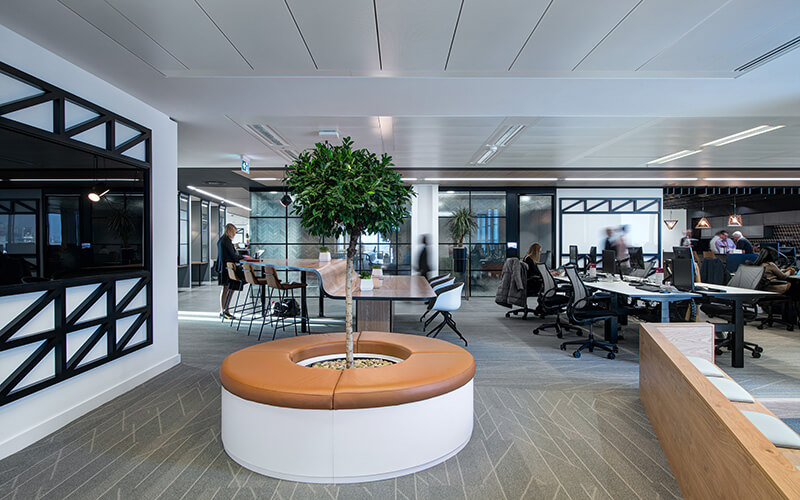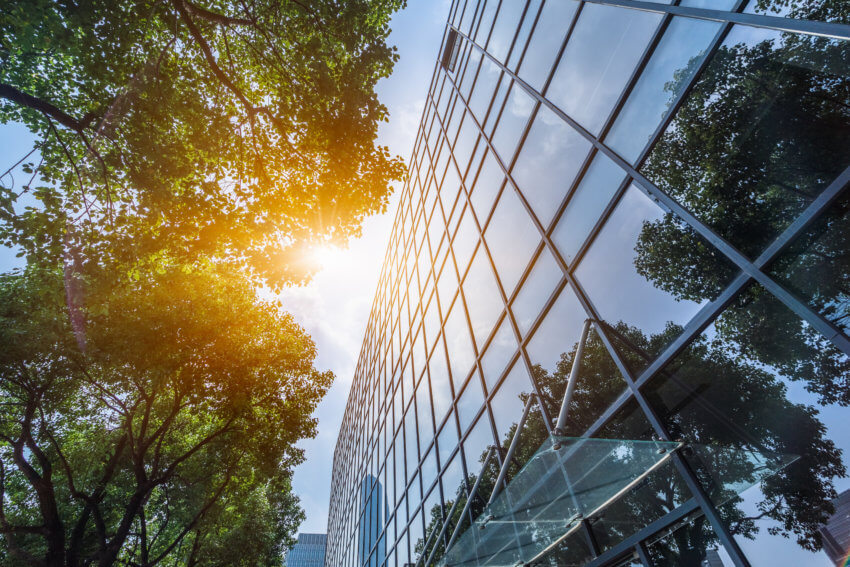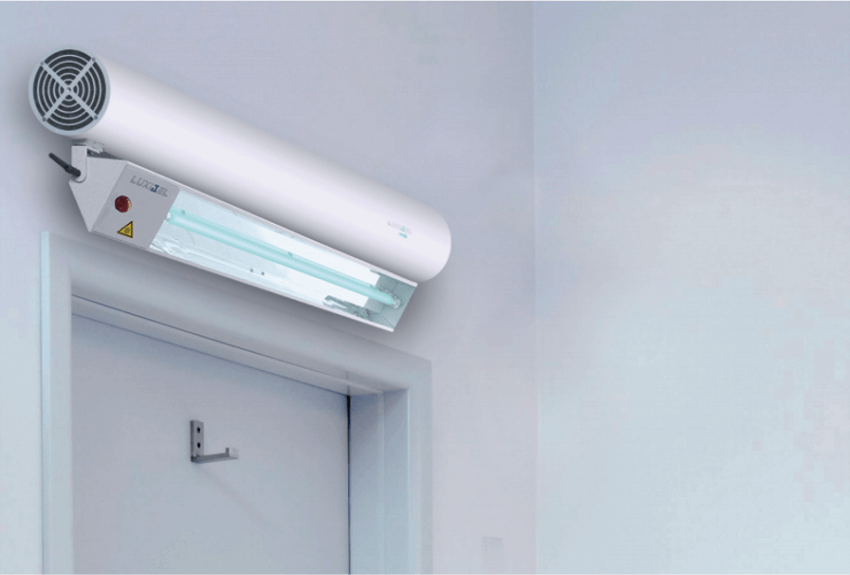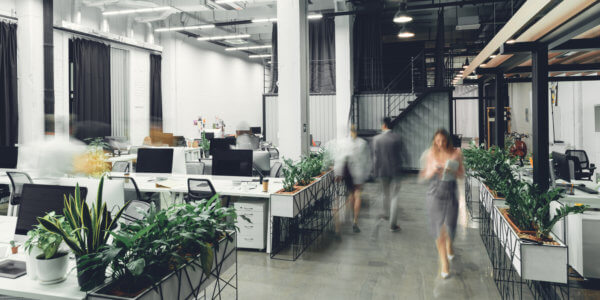How to design your office for wellbeing
Many of us spend long hours at work, so it’s only right that the environment is responsive to our needs as human beings. When it comes to wellbeing, office design is central. If a workspace is not designed to promote wellbeing, there will be impacts on our motivation, productivity and health.

What does wellbeing in the workplace look like?
In the post-Covid era of hybrid jobs and remote working, the office has retained a central place in the world of work. It’s a place for employees to connect and collaborate with other team members and meet clients. One key change is that the office is no longer the default destination for all employees. Instead, it has become a destination of choice.
In keeping with more inclusive attitudes in the workplace, inclusive design is becoming increasingly relevant. The focus is shifting from buildings and facilities to a more holistic approach. It includes all people and an understanding of specific needs relating to their health, ability, age, culture, ethnicity, gender, class and socio-economic status. People-centric design is even more important than ever and it’s time to redesign spaces so that everyone feels welcome.
Design for wellbeing is a sound business investment. It promotes:
- Employee morale and motivation
- Increased productivity
- Increased retention
- Increased employer attractiveness to new hires
By contrast, it reduces:
- Absence due to ill health
- Staff turnover
So, good office design and employee wellbeing go hand-in-hand.
What factors contribute to wellbeing?
What do we actually mean by the term ‘wellbeing’? It’s about more than physical health, although that is a fundamental component.
Wellbeing in the workplace is a positive feedback loop between an employee’s physical health, mental health and the environment they work in. Each point of the wellbeing triangle affects the other two.
Meanwhile, the workplace environment is formed by the interaction of technology and the design elements applied.

Workplace design elements that promote wellbeing
To design a workspace for wellbeing, consider:
Temperature
A comfortable temperature will have a significant effect on productivity and wellbeing. Typically, employees work best in an environment between 16°C to 24°C, give or take a few degrees, depending on levels of activity. Locations where there is heavy, physical work will have a comfortable temperature at the lower end of that range. Whatever the season, heating and cooling systems will keep different areas at the required comfort levels.
Lighting
Lighting levels have a direct effect on the mood of those in a space. Natural light promotes physical health, focus and productivity, and any office designed to enhance wellbeing will make maximum use of natural light. For example, think big windows, or light tunnels, and lots of them, while also providing shades to mitigate potential heat gains in warmer months.
Meanwhile, indoor lighting should be tailored to the specific types of work carried out in different areas of the building. Ideally, you’d also want to provide opportunity for people to dim and control lighting. Headaches and migraines can be triggered by intense artificial lighting.
Lux is the international standard of illumination; an employee’s primary desk should receive about 300 lux of illumination, while a more informal breakout space will need much less: about 150 to 200 lux.
As well as tailoring lighting to the type of work, considering how your lighting conditions affect different diversities is also key.
Air quality
Air quality is a significant factor in workplace wellbeing. Repeated exposure to airborne irritants and pollution has been linked to everything from headaches to lung damage and long-term diseases like asthma and chronic obstructive pulmonary disease (COPD). Direct exposure to pollutants is much less likely in an office environment, but that doesn’t mean that air quality is not a concern.
Stale air will lower employee wellbeing and decrease productivity; the provision of “a sufficient quantity of fresh or purified air” within “every enclosed workspace” is a legal requirement under the Workplace (Health, Safety and Welfare) Regulations 1992. So, it’s important to make sure that ventilation is up to scratch.
Consider how air purification could make your workspace healthier and more hygienic. Mitie’s air purification system, developed in partnership with Luxibel, is a chemical-free way to improve the quality of indoor air.
Noise levels
Long-term exposure to loud noise damages hearing, and while offices are normally low noise environments, maintaining acceptable noise levels should still be a consideration. Are your meeting rooms adequately sound-proofed? Is external noise (for example, traffic) a problem for employees in certain parts of the building? Are teams who work together grouped together? According to the job at hand, some teams invariably make more noise than others, so it makes sense to have a grouped seating policy, while also providing the options for quiet spaces for colleagues where needed.
Phone calls – especially if lengthy – can be a distraction for other employees, so a designated, sound-proofed room for phone calls, including video conferencing, may be worth the investment. For similar reasons, consider a clear policy on music and the use of radios. While some employees may enjoy these at work, others may not. To address this issue, encourage the use of headphones, where appropriate.
Comfort
When designing a workspace, it’s all too easy to focus on aesthetics and forget about the colleagues who will be using the space and interacting with its features. It sounds simple – and it is – but your office should be accessible to all and comfortable for everyone to work in. A particular type of office chair may look good – but is it comfortable? Ask for samples and clarify retailer return policies.
Consider biophilic design
People are innately drawn to the natural world. According to the biophilia hypothesis we tend to seek connections with nature. We see evidence of this in the way so many of us keep animals in our homes and form deep, emotional bonds with them. We also bring plants into our homes, enthusiastically cultivate gardens and go for long walks in the park or countryside.
Exposure to greenery increases wellbeing to a remarkable degree. According to the Centre for Sustainable Healthcare, many studies show that hospital patients recover more quickly if they can see trees from the ward window. Apply the same principle to your office design. Be generous with office plants, introduce interior living walls, and if you can, plant trees outside. Locate high-footfall areas (such as the canteen) in parts of the building with a view of the nearest green area.

How can Mitie help you with your workspace design?
Mitie is the UK’s leading facilities management specialist working with organisations in the public and private sectors. Our extensive project management and design capabilities place us at the forefront of companies offering workspace design as a service. Our experts can assist you with projects ranging from a light-touch refresh to a from-the-ground-up rebuild. Our design service is part of our transformational Science of Service approach.
Enquire now to see how Mitie can support your workspace design.
Read next

How Mitie uses technology to enhance workplaces
Work is a major part of most people’s lives, second only to our families in importance. The quality of our workplace makes a huge difference to our wellbeing and our productivity. So, does your…

12 ways to save energy at work
If you have flown at night, you will have seen the cities below lit up like Christmas trees. It is a spectacular sight. On the other hand, it is also a stark reminder of…
Cleaner air, safer workplaces
The pandemic has brought to the forefront just how important fresh air circulation and a healthy environment is to well-being and performance in the workplace. Good ventilation and the flow of fresh air reduces…